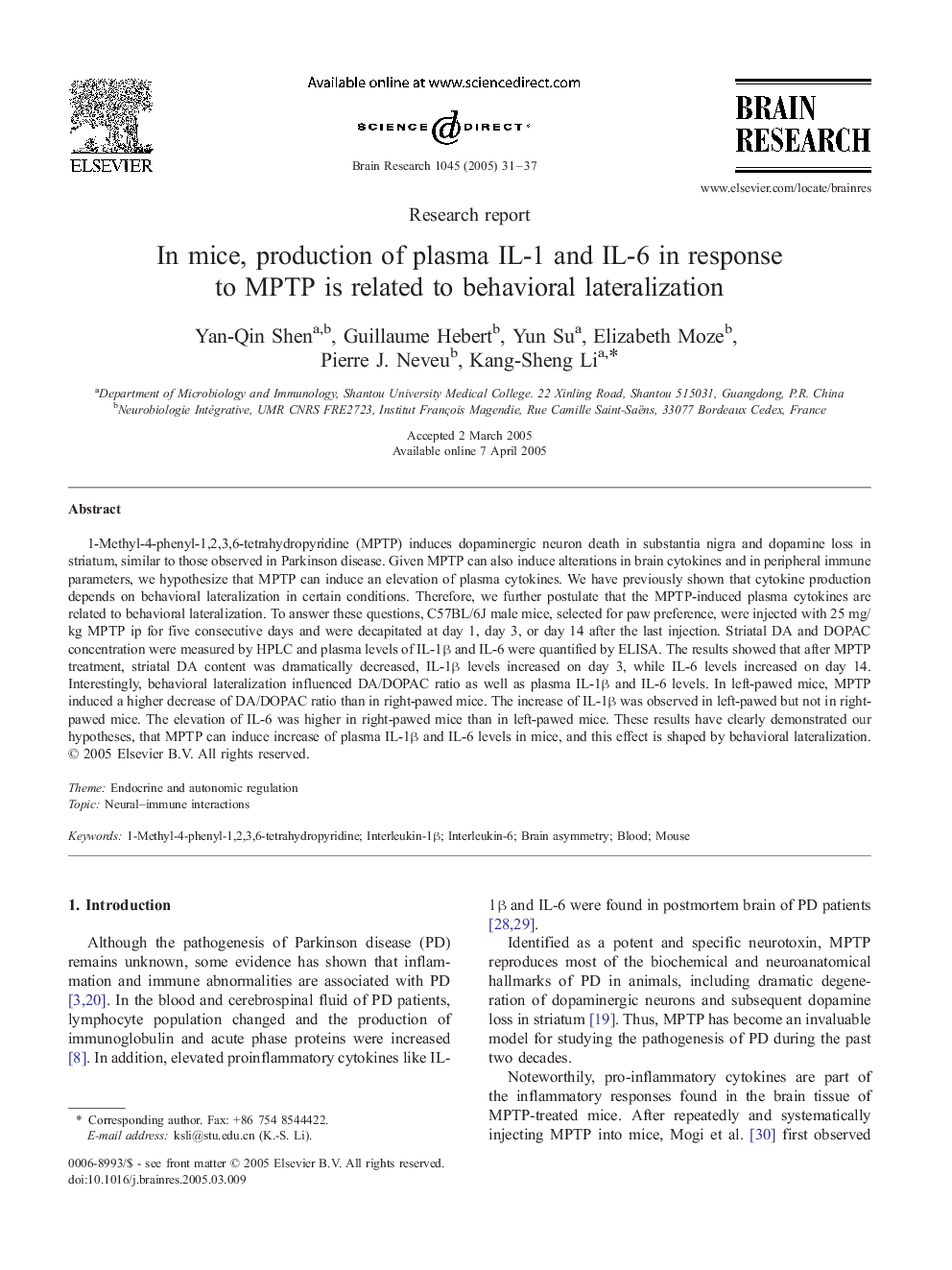| Article ID | Journal | Published Year | Pages | File Type |
|---|---|---|---|---|
| 9416280 | Brain Research | 2005 | 7 Pages |
Abstract
1-Methyl-4-phenyl-1,2,3,6-tetrahydropyridine (MPTP) induces dopaminergic neuron death in substantia nigra and dopamine loss in striatum, similar to those observed in Parkinson disease. Given MPTP can also induce alterations in brain cytokines and in peripheral immune parameters, we hypothesize that MPTP can induce an elevation of plasma cytokines. We have previously shown that cytokine production depends on behavioral lateralization in certain conditions. Therefore, we further postulate that the MPTP-induced plasma cytokines are related to behavioral lateralization. To answer these questions, C57BL/6J male mice, selected for paw preference, were injected with 25 mg/kg MPTP ip for five consecutive days and were decapitated at day 1, day 3, or day 14 after the last injection. Striatal DA and DOPAC concentration were measured by HPLC and plasma levels of IL-1β and IL-6 were quantified by ELISA. The results showed that after MPTP treatment, striatal DA content was dramatically decreased, IL-1β levels increased on day 3, while IL-6 levels increased on day 14. Interestingly, behavioral lateralization influenced DA/DOPAC ratio as well as plasma IL-1β and IL-6 levels. In left-pawed mice, MPTP induced a higher decrease of DA/DOPAC ratio than in right-pawed mice. The increase of IL-1β was observed in left-pawed but not in right-pawed mice. The elevation of IL-6 was higher in right-pawed mice than in left-pawed mice. These results have clearly demonstrated our hypotheses, that MPTP can induce increase of plasma IL-1β and IL-6 levels in mice, and this effect is shaped by behavioral lateralization.
Keywords
Related Topics
Life Sciences
Neuroscience
Neuroscience (General)
Authors
Yan-Qin Shen, Guillaume Hebert, Yun Su, Elizabeth Moze, Pierre J. Neveu, Kang-Sheng Li,
